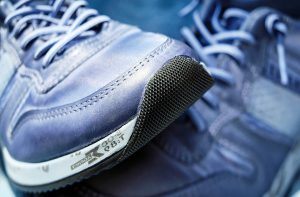Is your low back pain being caused by your feet?

With a leg length discrepancy or poor foot mechanics, the unequal forces can cause chronic low back pain. This study compares the impact of real insoles with a placebo on low back pain. Individuals using the real insoles reported significantly lower pain levels and better overall results.
Before more invasive treatments like pills or surgery, consider insoles. Naturally, a conversation with your health care provider should take place prior to any treatment decisions and all care should be individualized.
The Research
Eur Spine J. 2005 Aug; 14(6): 546–550.
Published online 2005 Jan 25. doi: 10.1007/s00586-004-0824-z
PMCID: PMC3489231
The effect of insoles on the incidence and severity of low back pain among workers whose job involves long-distance walking
- Shabat,1,3,3T. Gefen,1M. Nyska,1 Y. Folman,2 and R. Gepstein1
Author information ► Article notes ► Copyright and License information ►
Abstract
The prevalence and incidence of low back pain in general society is high. Workers whose job involves walking long distances have an even higher tendency to suffer from low back pain. A positive effect of insoles in reducing low back pain was found in professional sports players. This was not examined on people whose job involves walking long distances. In this double blind prospective study we examined the effectiveness of insoles constructed in a computerized method to placebo insoles in 58 employees whose work entailed extensive walking and who suffered from low back pain. The evaluation was performed by the MILLION questionnaire, which is considered as a valid questionnaire for evaluation of low back pain. We calculated the differences of the pain intensity before and after the intervention, in the employees using the insoles manufactured by computer in comparison to the users of the placebo insoles. In each group, the analysis was performed in comparison to the baseline. A total of 81% of the employees preferred the real insoles as effective and comfortable in comparison to 19% of the users of the placebo insoles (P<0.05). The results of this study indicate a substantial improvement in the low back pain after the use of the true insoles. The average pain intensity according to the MILLION questionnaire before the use of the insoles was 5.46. However, after the use of the real insoles and the placebo insoles, the average pain intensity decreased to 3.96 and 5.11, respectively. The difference of the average pain intensity at the start of the study and after the use of the real insoles was significant: −1.49 (P=0.0001), whereas this difference after the use of the placebo insoles was not significant: −0.31 (P=0.1189). The reported severity of pain also decreased significantly: a level 5 pain and above was reported by 77% of the subjects at the start of the study. After the use of the real insoles only 37.9% of the subjects reported a similar degree of pain severity, and 50% of the subjects did so after the use of the placebo insoles (P< 0.05). We did not find a link between low back pain and other variables such as gender, age, number of offspring, work seniority, smoking, previous use of insoles and previous medication. This study demonstrates that the low back pain decreased significantly after the use of real insoles compared to placebo ones.











